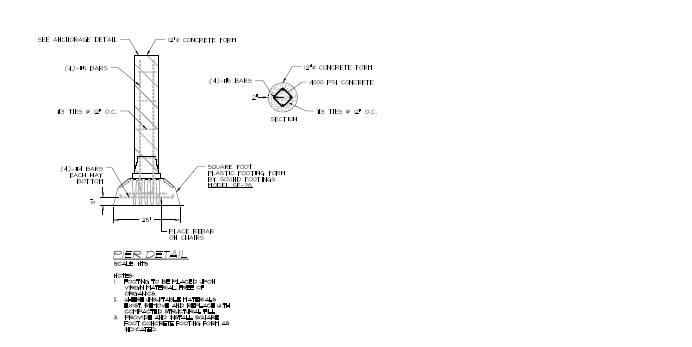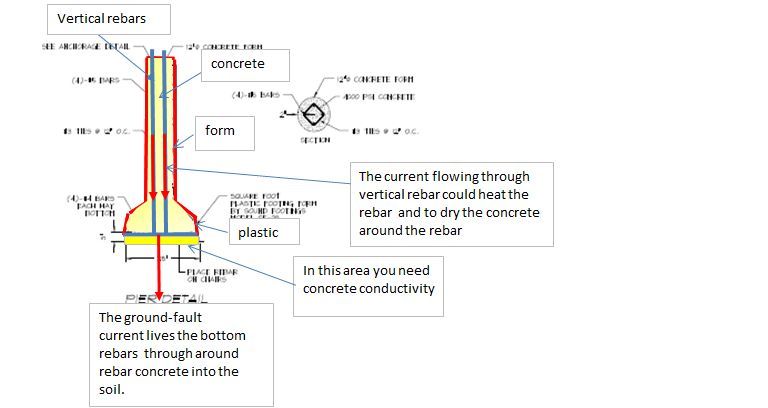Would like to discuss the validity of the following:
Reinforced concrete pier:
8-#4 bars (16 lf total) horizontal steel in 28"x28" footing
Footing is formed with plastic tube base that receives tube form. The tube base has holes in the top to help the concrete flow.
Tube form is a 12" diameter commercial grade form, coated cardboard. Form is typically stripped just below grade.
Vertical steel bars are 4-#5 bars with hooks. Approximately 16 lf of steel will be below grade, for a total of 32 lf.
Bare copper conductor 4 AWG attached to #4 bars horizontal and #5 bars vertical
In a discussion with an electrical contractor he thinks that the concrete is protected by the forms and will limit the amount of moisture that the concrete will absorb and therefore negate its conductivity.
All opinions welcome.
Thanks in advance.
Reinforced concrete pier:
8-#4 bars (16 lf total) horizontal steel in 28"x28" footing
Footing is formed with plastic tube base that receives tube form. The tube base has holes in the top to help the concrete flow.
Tube form is a 12" diameter commercial grade form, coated cardboard. Form is typically stripped just below grade.
Vertical steel bars are 4-#5 bars with hooks. Approximately 16 lf of steel will be below grade, for a total of 32 lf.
Bare copper conductor 4 AWG attached to #4 bars horizontal and #5 bars vertical
In a discussion with an electrical contractor he thinks that the concrete is protected by the forms and will limit the amount of moisture that the concrete will absorb and therefore negate its conductivity.
All opinions welcome.
Thanks in advance.


